Media coverage
Share

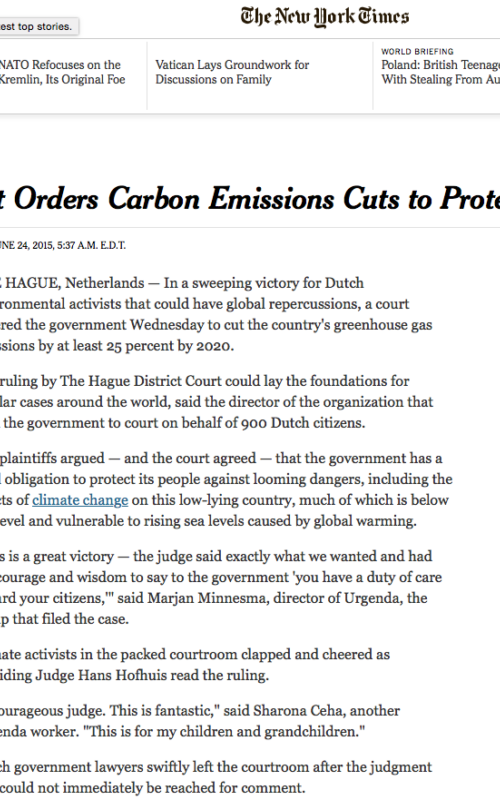
The New York Times
In a sweeping victory for Dutch environmental activists that could have global repercussions, a court ordered the government Wednesday to cut the country's greenhouse gas emissions by at least 25 percent by 2020.Bill Hare, senior scientist at Climate Analytics, a nonprofit organization based in Berlin, said the Dutch ruling's impact could be massive."(This) has the potential to become a precedent whose effect will ultimately flow through to undermining the markets for coal, oil and gas," he said.
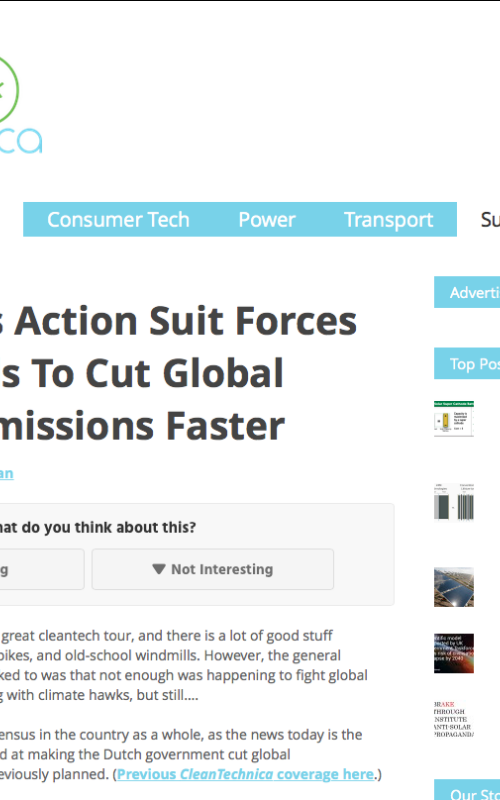
Clean Technica
[...] the news today is the success of a class-action suit aimed at making the Dutch government cut global warming emissions faster than previously planned.“This historic ruling will have far reaching consequences in the Netherlands, Europe and the rest of the world,” said Gerben-Jan Gerbrandy, a Dutch member of the European Parliament in the Group of the Alliance of Liberals and Democrats for Europe.“This could be the first judicial warning shot to governments around the world,” said Bill Hare of Climate Analytics.
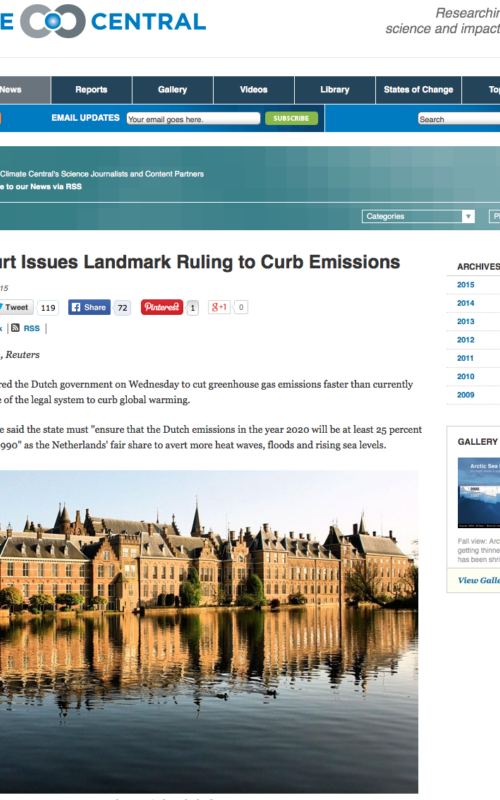
Climate Central
A district court ordered the Dutch government on Wednesday to cut greenhouse gas emissions faster than currently planned in a rare use of the legal system to curb global warming.
"The parties agree that the severity and scope of the climate problem make it necessary to take measures to reduce greenhouse gas emissions," the summary said.
Some saw the ruling as a landmark, if it ends up being binding. "This could be the first judicial warning shot to governments around the world," said Bill Hare, of independent research group Climate Analytics.
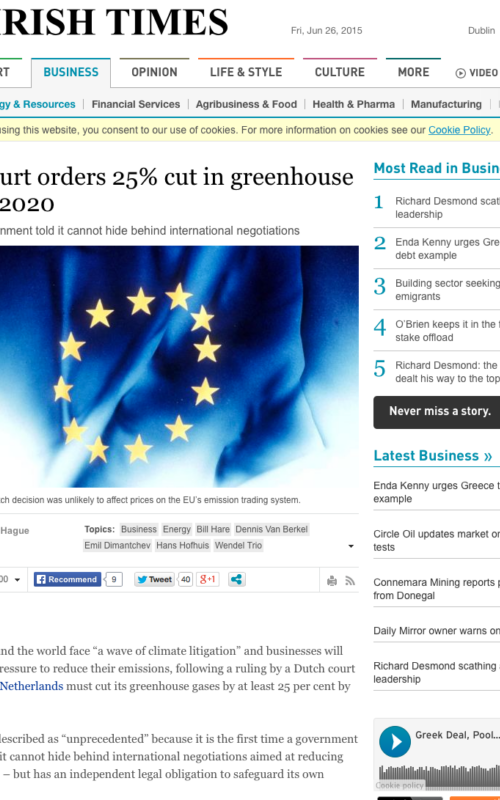
Irish Times
Governments around the world face “a wave of climate litigation” and businesses will come under new pressure to reduce their emissions, following a ruling by a Dutch court yesterday that the Netherlands must cut its greenhouse gases by at least 25 per cent by 2020.
Dr Bill Hare, senior scientist at Climate Analytics, a non-profit consultancy based in Berlin, agreed the impact of the ruling could be “massive”, saying it had “the potential to become a precedent that will ultimately flow through to undermining the markets for coal, oil and gas.” Based on current government policy, the Netherlands will achieve a reduction of 17 per cent at most by 2020 – well below the norm of 25 per cent to 40 per cent deemed necessary for developed countries by climate science and international climate policy.
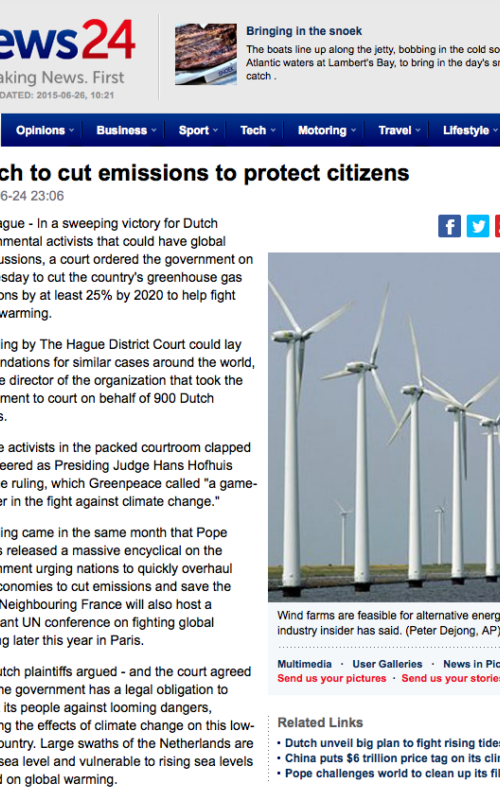
News 24
In a sweeping victory for Dutch environmental activists that could have global repercussions, a court ordered the government on Wednesday to cut the country's greenhouse gas emissions by at least 25% by 2020 to help fight global warming.
Bill Hare, senior scientist at Climate Analytics, a non-profit organisation based in Berlin, said the Dutch ruling's impact could be massive.
"[The ruling] has the potential to become a precedent whose effect will ultimately flow through to undermining the markets for coal, oil and gas."
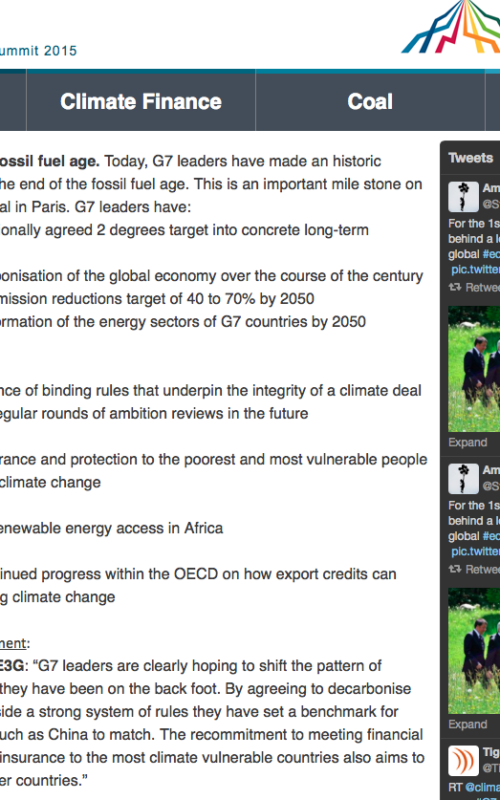
The Tree
G7 leaders have made an historic announcement that signals the end of the fossil fuel age. This is an important mile stone on the road to a new climate deal in Paris. An overview of the aspects of the announcement, as well as reactions are outlined in this article.
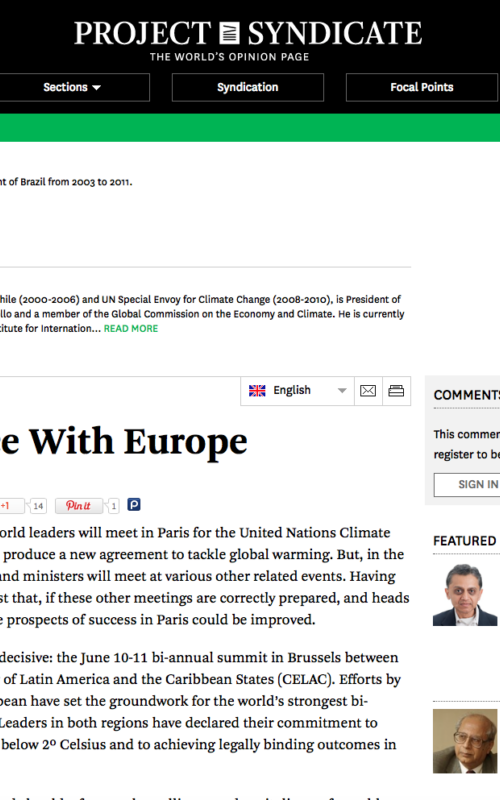
Project Syndicate
The June 10-11 bi-annual summit in Brussels between the European Union and the Community of Latin America and the Caribbean States (CELAC) could be decisive. Efforts by Europe and Latin America and the Caribbean have set the groundwork for the world’s strongest bi-regional partnership on climate change. Leaders in both regions have declared their commitment to holding the rise in global temperature to below 2º Celsius and to achieving legally binding outcomes in Paris.
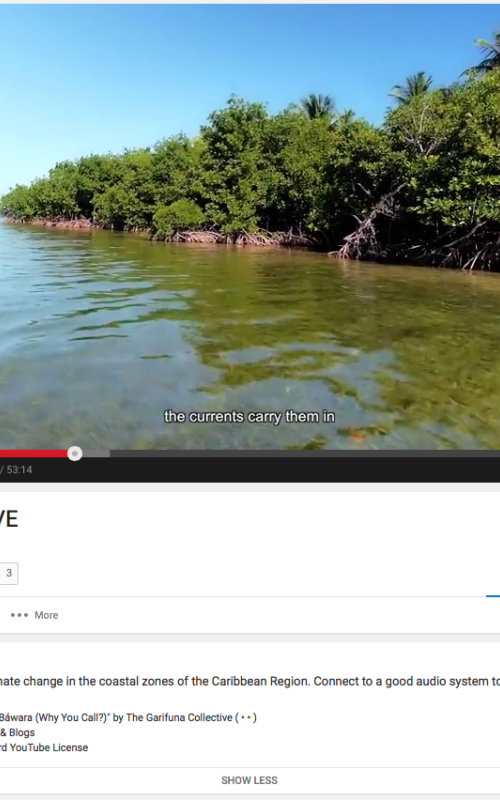
YouTube
A video explaining the impacts of climate change in the Caribbean, such as sea level rise, coastal erosion and coral bleaching, accompanied by music from the region.
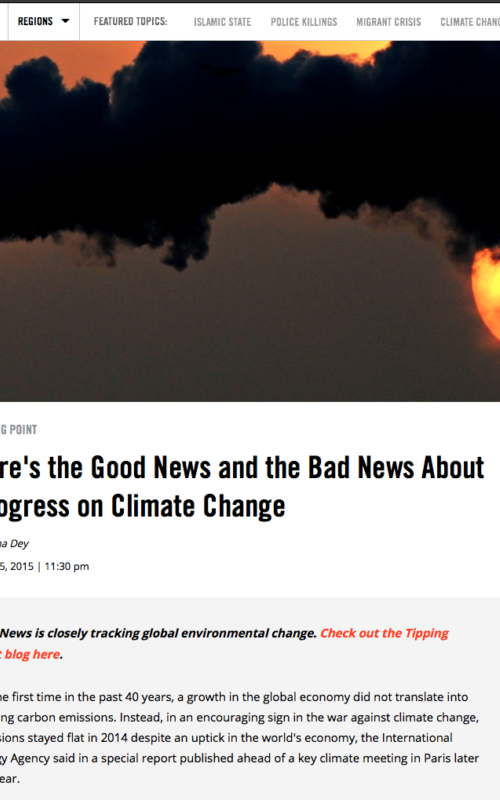
Vice
The Paris meeting is aimed at finding an agreement between all countries to come up with an unified plan to combat climate change and cap global temperature rise to 2C. While several governments have already submitted their pledges for emission reductions, called Intended Nationally Determined Contributions (INDCs) in UN jargon, many big emitters like China, India, and Brazil have not yet announced their reduction goals, dampening efforts to analyze if current pledges are any good. Nevertheless, several initial analyses have already found they may prove to be inadequate, including a recent prediction by the non-profit Climate Analytics that said current pledges will only delay reaching a 2C rise by two years.
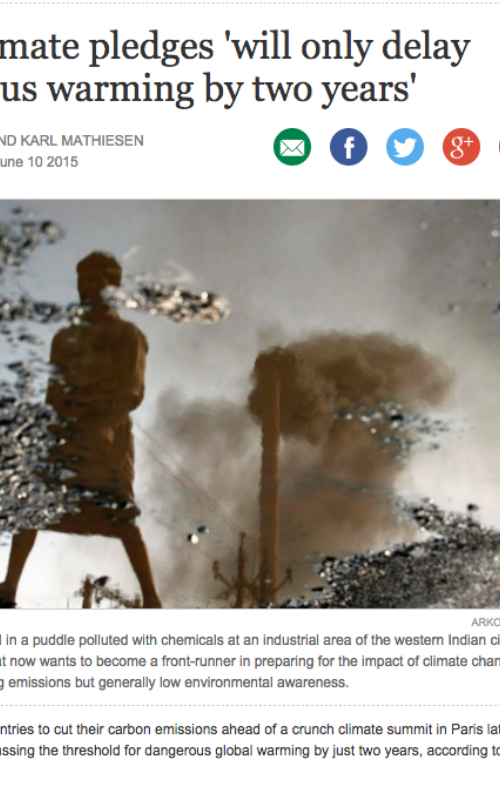
stuff.co.nz
Pledges made by countries to cut their carbon emissions ahead of a crunch climate summit in Paris later this year will delay the world passing the threshold for dangerous global warming by just two years, according to a new analysis. The analysis for the Guardian by the non-profit Climate Analytics comes as climate negotiators from nearly 200 countries meet in Bonn and academics warned the agreement hoped for in Paris would not keep temperatures to UN's target of holding temperature rises below 2C above pre-industrial levels.